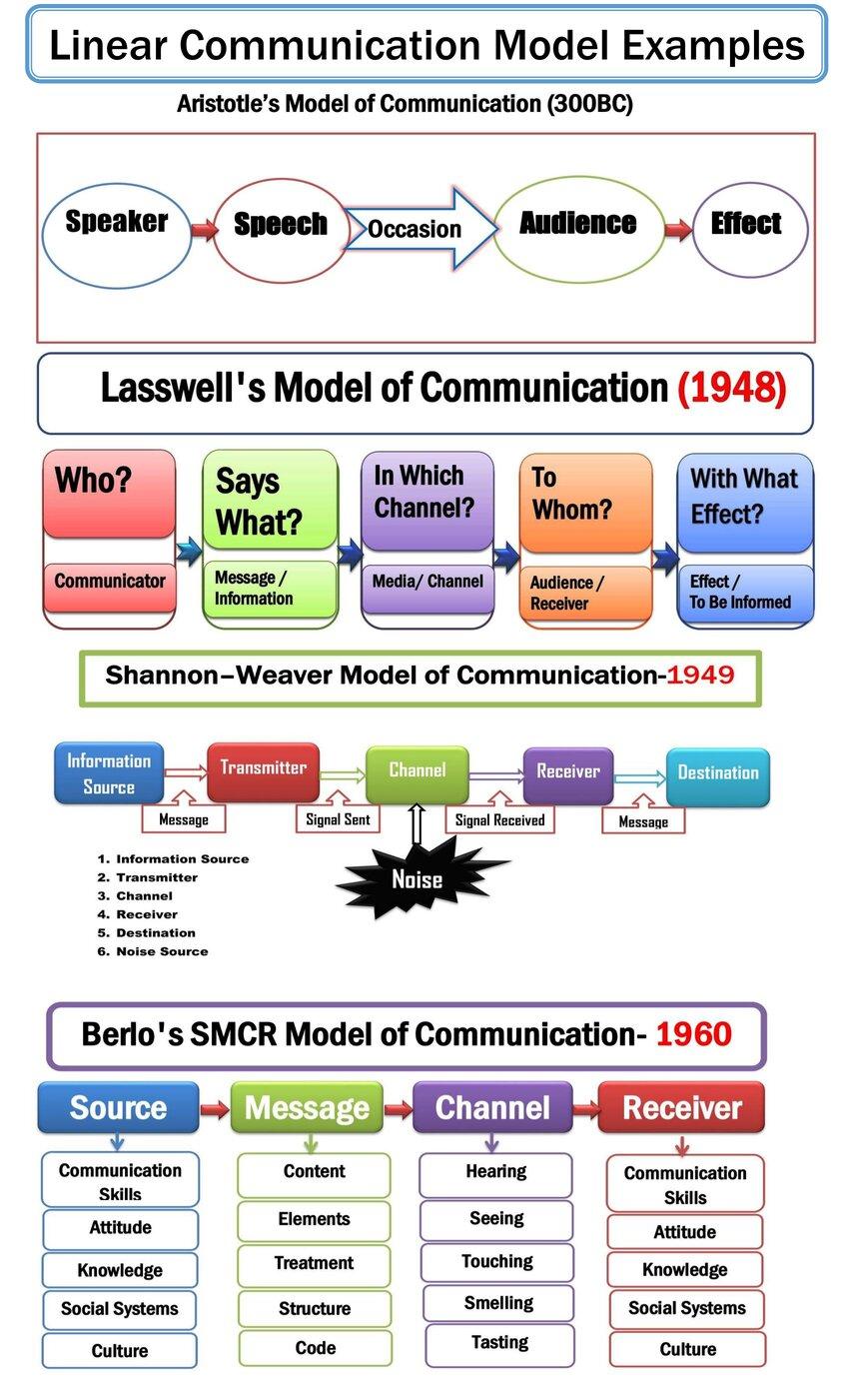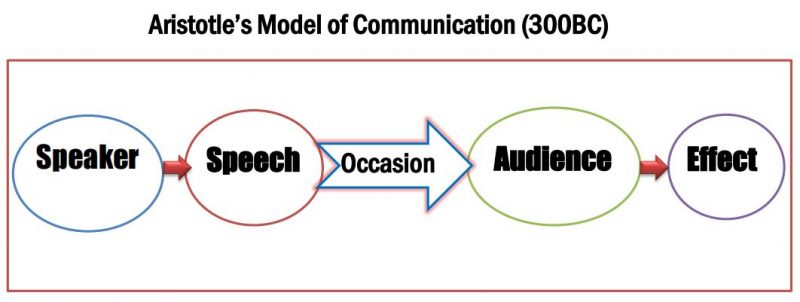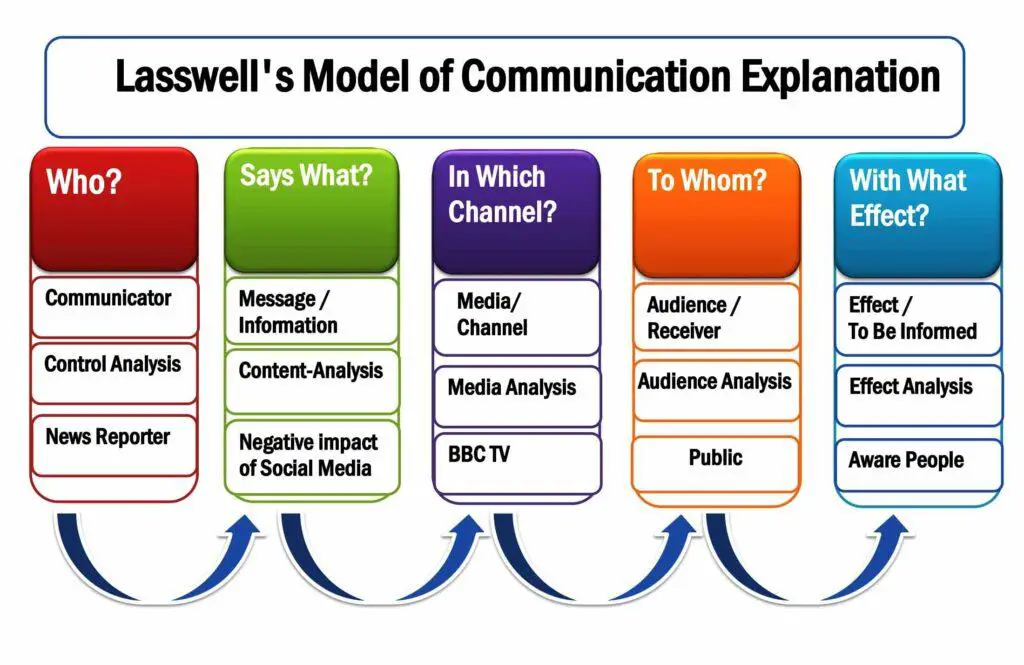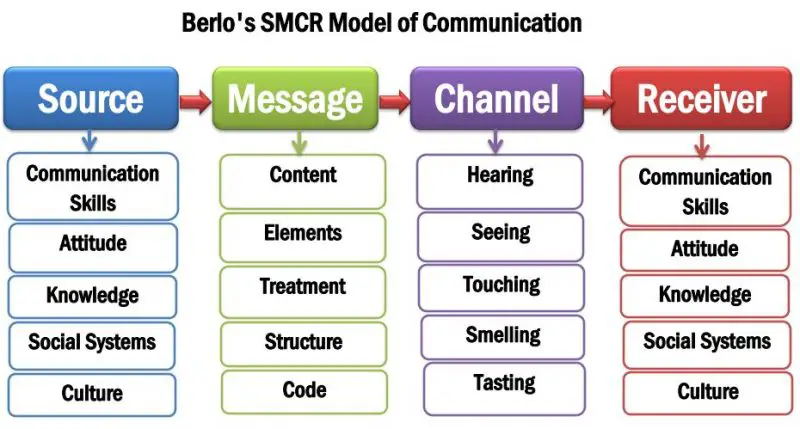Examples of STAR Interview Questions and Answers. STAR Interview Questions and Answers PDF.
STAR Interview Questions and Answers
The STAR interview questions and answers refer to the organized statement relevant to the interviewee’s Situation, Task, Action, and Result of the previous job condition. It is a structural method of answering questions. It is familiar as the STAR technique of interview questions. Although, a few interviewers ask to introduce themselves in the job interview session. However, self-introduction for the viva exam is a common phenomenon. The applicant needs to follow the STAR method of answering questions after self-introduction.
The STAR interview question and answer assist the interviewee in explaining their previous job experience. It also helps interviewers to ask questions. It also helps the interviewer to assess the interviewee’s skills and experience based on the four specific situations. These answers are very important to self-introduction for the job interview to prove the applicant’s potential. The STAR interview questions and answers assist applicants in explaining their strengths precisely, and it is crucial to inform the interviewer about skills and experience relevant to the position. Hence, the STAR interview method helps both the interviewee and interviewer reciprocally.
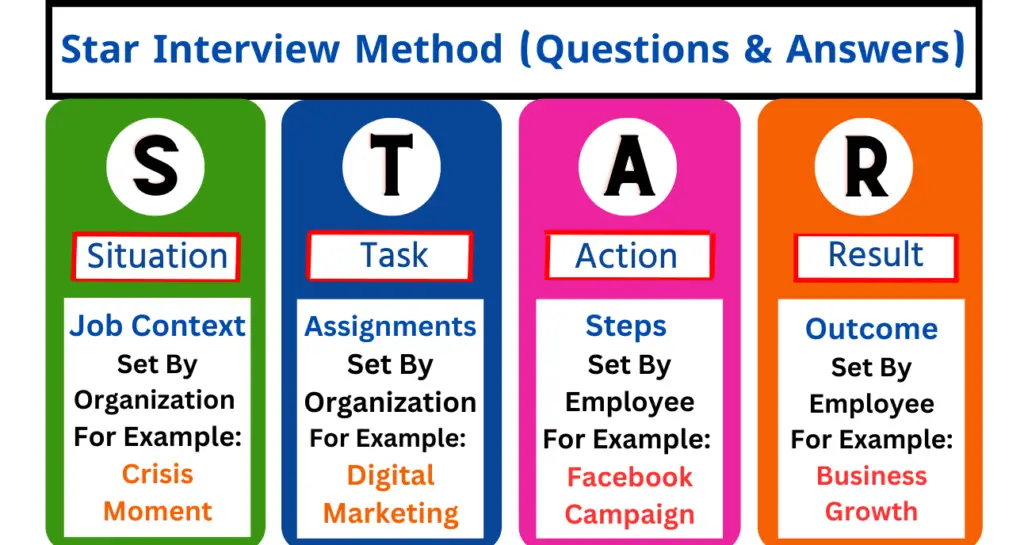
Star Interview Method Meaning
Star method interview means explaining previous experience based on the four key factors: situation, task, action, and results.
- Situation
- Task
- Action
- Results
1. Situation (Job Context)
The situation in the STAR interview method indicates the applicant’s job context. It refers to the job arena and scenario they encountered while working there. It highlights the problems, crises, and issues which the applicants overcame. The organization designs the situation and tasks for employees.
(The applicant can follow the answer example to describe what was the situation they have encountered previously).
STAR Interview Questions and Answers Examples-1
For example, the organization’s sell-growth decreased rapidly for the natural crisis. The sell-growth declined due to conflicting personalities within the marketing department. The CEO appointed me to handle the crisis. I worked very hard to recover business growth within two months.
STAR Interview Questions and Answers Examples-2
I work as a website content writer for the Global Assistant Education Consultant. Google penalizes the website for duplicate content, and it lost massive organic traffic, triggering declining revenue. The managing director assigned me to recover the visitors.
2. Task (What Activities)
Task refers to the employee’s activities and assignments in a specific situation in the STAR interview method. Senior employees set the assignments. It does not point to where they work; instead, it means what you work on regularly. In the interview session, the interviewee needs to discuss previous tasks that they used to accomplish. You have to mention the specific tasks that you have done before. The applicant should provide enough information regarding previous job duties so that the interviewer can understand his capabilities. The task signifies specific job responsibilities, including IT specialist, Group leader, crisis management tasks, content writer, social media marketing, graphic designer, etc.
The applicant can follow the Star interview answer example to describe what activities they have completed before.
STAR Interview Questions and Answers Examples-1
For example, my senior manager instructed me to recover the website traffic. I paraphrased most duplicate content and published them again.
STAR Interview Answers Example-2
Social media marketing managers explain how they promote products and company brands on social media platforms, including Facebook, Instagram, LinkedIn, YouTube, and WhatsApp.
STAR Interview Answers Example-3
A digital marketing manager should say that I used to regulate the Facebook page and WhatsApp group to communicate with potential and existing customers. Thus, the task in the STAR interview technique indicates daily assignments in the workplace.
3. Action (What Steps)
Action in the STAR interview method represents employees’ steps to achieve the goal. It specifies the individual contribution toward achieving the business goal. In this section, applicants should emphasize how many tasks they have done while working in a previous or current company to overcome the crisis. Action is the most crucial part of the STAR interview approach to explaining the applicant’s strengths.
The employees take action for positive outcomes, not management. Therefore, the applicants must emphasize these sections to represent them appropriately.
However, the interviewee should not mention what their team or group did to accomplish the project. You should use “I,” not “we,” when describing actions.
The applicant can follow this question-answer example to describe what actions they took to overcome the critical situation.
STAR Interview Questions and Answers Examples-1
For example, a digital marketing manager should articulate that I design product banners and share them daily on Facebook, Instagram, Linkedin, and WhatsApp. Additionally, I communicate with our existing and potential clients to inform them about the new laptops.
4. Results (Achievements)
The result of the STAR interview method describes the outcome of the actions taken to achieve the goal. It is the most critical section, followed by the actions. You have to present personal credits that enhance to accomplish business goals. The answers should contain multiple positive effects. You can point out a list of positive results. The interviewee must emphasize explaining the results because it also represents their capabilities. Therefore, the action and results of the STAR interview technique are critical parts for the applicants.
For example, a marketing manager should enunciate that I have managed to sell 200 laptops in a month. Additionally, my actions have increased the number of social media page followers and website visitors. Ultimately, it contributes to corporate reputation and image.
STAR Interview Questions and Answers Examples
The author shows the STAR interview question and answers examples for applicants. These examples of interview questions and answers examples help fresher students and employees to face interview sessions.
STAR Interview Questions Examples
Based on the STAR interview, the author created the following questions for the interviewer who can ask the applicants. The interviewers can ask these questions before, during, or after the introduce-yourself speech.
- Describe a situation where you persuaded other employees to accept organizational change for a better outcome.
- Explain how did you complete tasks when you were under immersive pressure.
- Describe a time when you were exhausted at work and recover it properly.
- Give me the list of the assigned tasks you regularly did to achieve the company goal.
- Please give me an example of when you contributed to crisis management in the organization.
- Give us a specific example where you set an independent goal to achieve the company vision and finally reached it.
- Tell a situation when you confronted a company’s rules and regulations but denied them to complete the tasks.
- Describe a time when you failed to complete the tasks. What lesson did you learn from it?
Examples of STAR Interview Questions and Answers
Situation (S): In January 2023, our company’s sell revenue decreased for the lack of digital marketing. I enhanced social media marketing and customer service to improve revenue.
Task (T): My senior assigned me to improve social media marketing. My goal was to create a new marketing plan that increased the revenue.
Action (A): I designed promotional content with product banners and shared them on Facebook, Instagram, and WhatsApp. Additionally, I motivated my digital marketing team to communicate with potential and existing customers regularly.
Result (R): Finally, I improved by around $5 million in sell growth in February 2023. I also contributed to increasing followers for our social media pages. Now, we receive more orders from social media for the new marketing strategy.
STAR Interview Questions and Answers PDF
The author connects the Star interview questions and answers pdf for employees and managers. It helps applicants to prepare themselves for the interview sessions. You need to click on the following link to download the pdf format of Star interview questions and answers.
Question-1
Describe a situation when you handled massive stress in a workplace.
Answer-1
In my previous workplace, our senior officer left the job just one week before delivering a project to clients. The senior manager handled the project and was the chief of this project. The managing director instructed me to complete the project within the period. The tight deadline put massive pressure on me to handle the project. However, I called upon an international meeting with coworkers and divided the task again. I had to accept additional tasks from the senior officer who left the job. I put extra time into coping with the situation and finally achieved it. This crisis moment allowed me to explore that I can work under stressful situations. My dedication, commitment, plan, and hard work function perfectly.
STAR Interview Questions and Answers Preparation
- The interviewee should remember situations that show good actions, especially skills, work experience, supervision, cooperation, planning, and customer satisfaction.
- They should briefly explain the situation to answer the questions.
- The interviewees must outline a story with a beginning, middle, and end. They must be ready to explain the situation following the task, action, and result.
- They have to present results that reflect the applicant’s credibility positively.
- Everyone must be honest while describing the story, even if the result is unfavorable. Do not make a fake story to enhance credibility.
